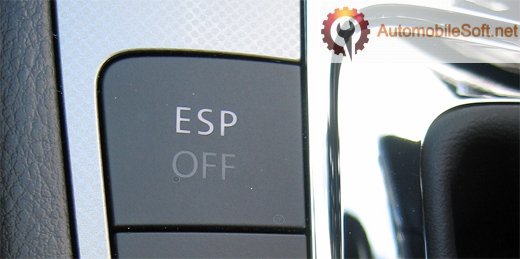ESP
Renamed by certain manufacturers: VSC – Vehicle Stability Control, DSC – Dynamic Stability Control, PSM, etc., it is the electronic system who intervenes when the computer detects a deviation from the trajectory of travel pursued by driver reducing engine power and / or braking differential / selective of some of the vehicle wheels to prevent loss of control (tête-à-queue) and to ensure continuing stability in driving. Functionality and its necessity are things that few drivers know.
ESP has emerged as a normal evolution in the field of automotive safety after ABS systems have reached their limits and required an additional measure to increase safety in driving. This, while the maximum speeds that new cars are capable can put into trouble many unskilled drivers.
Proved efficiency through numerous tests and by experienced drivers who avoided serious accidents through the system, prompted the EU decision to impose ESP as standard equipment of all new vehicles which are available on the European market starting November 1, 2014. In United States requiring ESC for all passenger vehicles under 10,000 pounds (4536 kg), phasing in the regulation starting with 55% of 2009 models (effective 1 September 2008), 75% of 2010 models, 95% of 2011 models, and all 2012 models.
ESC
Electronic stability control. ESC is the ultimate equipment. The equipment that integrates all the other devices of the car at runtime. If you have ESP, no matter other technical abbreviations related to active safety, since surely you have it all …
After the seat belt, ESP is the most important vehicle safety system – it is actually even more vital than the airbag. Based on independent reports, as much as 85 % of skidding incidents on the streets might be avoided if all autos were equipped with the anti-skid system.
Swerving on dry, wet, muddy, or slippery roads usually results in serious traffic crashes. Making use of intelligent sensors, ESP examines 30 times per second whether the vehicle is actually moving in the way that the driver is steering it in. When the measured values do not match, the anti-skid system intervenes and initially decreases motor power. If that is not enough, it furthermore brakes different wheels, producing the counterforce required to keep a car on course.
ESP is the obvious next step in the additional improvement of the ABS antilock braking system developed by Bosch in 1978. Nowadays, ESP is a lot more than just anti-skid system. Many beneficial features now account for most of its performance, such as the capability of ESP to prevent an automobile from rolling in reverse during hill starts. Additionally it is able to stabilize swerving trailers and to reduce the rollover risk of sports utility and light commercial vehicles.
It processes information from all sensors and makes decisions related to operating regime of the engine or other equipment such as ABS. For example, in the case of curves taken too quickly, ESP enhances the ABS (reduces the risk of skidding) and through targeted intervention on engine management prevents a possible skidding of the vehicle. ESP operates in the whole speed range and automatically engages at every engine start. This system can be coupled to and decoupled if necessary, by pressing the ESP button. If ESP is switched off the warning light is lit permanently. But this is only recommended if with snow chains and in the case of loose running surfaces, free.
The system is designed to prevent the creation of a difference of speed between the wheels of the same axle on acceleration
(at a level that can not be compared with a self-locking differential) and to maximize the level of traction, superior at the time when the wheel is not spinning.
ESP Improves a vehicle’s stability
In the graphic above is observed efficiency of equipping the car with ESP in the case of a critical maneuvers.
Car without ESP:
Step 1. The vehicle encounters an obstacle.
Step 2. Driver turns suddenly and go into oncoming traffic and lost control of the car.
Step 3. At countersteer slippage occurs.
Car with ESP:
Step 1. The vehicle encounters an obstacle.
Step 2. Driver turns suddenly, ESP is activated and restores the control.
Step 3. Because countersteer the danger reappears ESP is activated again.
Step 4. The vehicle is stabilized.
Important:
[ESP does not know you step the clutch! ESP is effective only with the clutch engaged and becomes ineffective in the case of its skidding.]
[ESP is perverse! It gives a sense of stability until a certain threshold (eg the input speed in curves, speed on wet roads, etc.) over which if you pass, will suddenly lose control of the car.]
It is said that the car without ESP “talk”, ie driver feels the rollover tendency of the car and realizes its limits. In the case of ESP, the car is “silent” because the rollover tendency is attenuated by electronic equipment, providing a false sense of security.
We hope to be well understood, the ESP is beneficial equipment for safety and comfort of the passengers, but you have to know the limits of your car without ESP. Let the car to “talk” about its limitations when you buy one.
After this test, knowingly, in acquaintance of the cause you can couple the ESP in order to benefit from maximum comfort in all trips.

Daniel
I’m very happy to read this. This is the type of info that needs to be given to people.